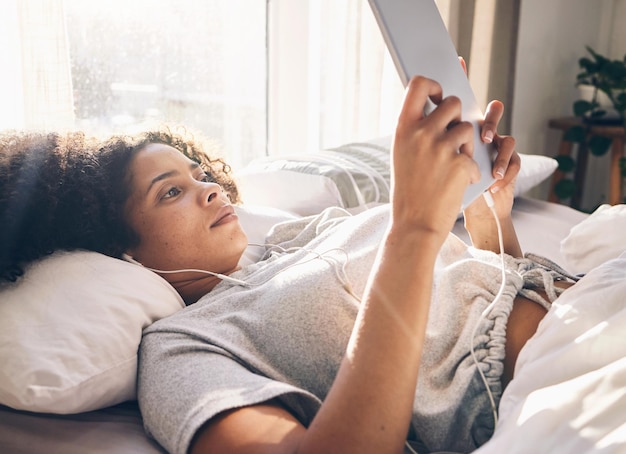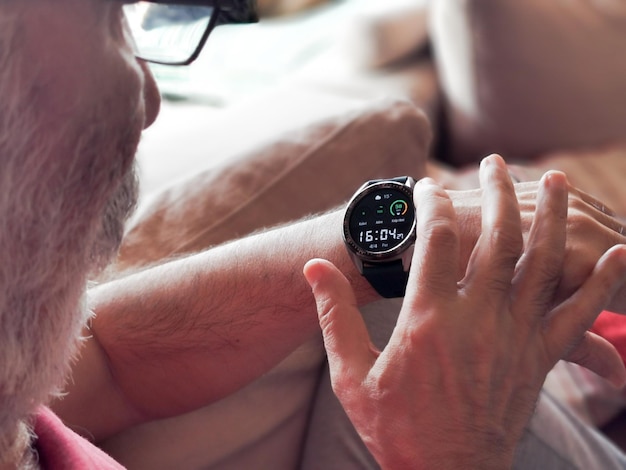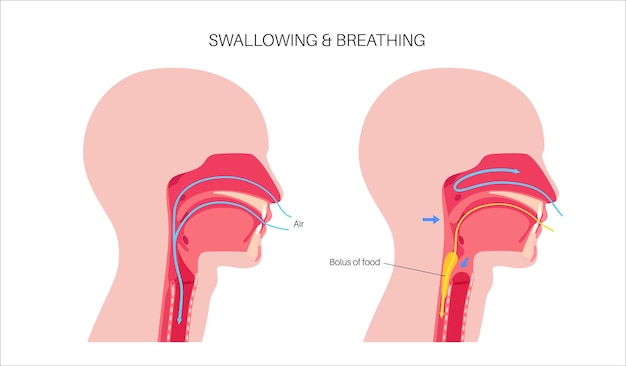Sleep Apnea Update: At-Home Testing and Treatment Advances

Sleep Apnea Update: New At-Home Testing Options and Treatment Advances brings advancements in diagnostic tools and therapies, offering more accessible and personalized approaches to managing sleep apnea.
Are you struggling with restless nights and persistent fatigue? The latest Sleep Apnea Update: New At-Home Testing Options and Treatment Advances could be the key to unlocking a better night’s sleep and improved overall health.
Understanding Sleep Apnea
Sleep apnea is a common sleep disorder characterized by pauses in breathing or shallow breaths during sleep. These interruptions can occur multiple times per hour, leading to fragmented sleep and reduced oxygen levels in the blood. Recognizing the signs and understanding the condition is the first step toward effective management.
Types of Sleep Apnea
There are three primary types of sleep apnea: obstructive sleep apnea (OSA), central sleep apnea (CSA), and mixed sleep apnea. OSA is the most common type, caused by a blockage of the airway, usually when the soft tissue in the back of the throat collapses during sleep.
Symptoms and Risk Factors
Common symptoms of sleep apnea include loud snoring, gasping for air during sleep, daytime sleepiness, morning headaches, and difficulty concentrating. Risk factors include obesity, age, a large neck circumference, and family history of sleep apnea.
- Snoring loudly and frequently
- Waking up with a dry mouth or sore throat
- Experiencing excessive daytime sleepiness
- Having difficulty concentrating during the day
Untreated sleep apnea can lead to serious health complications, including high blood pressure, heart disease, stroke, and type 2 diabetes. Therefore, early diagnosis and treatment are crucial for managing the condition and preventing long-term health problems. Understanding these basics paves the way for exploring the latest advancements in testing and treatment.
Advances in At-Home Sleep Apnea Testing
Traditional sleep studies often require an overnight stay in a sleep lab, which can be inconvenient and expensive for many individuals. Recent advancements have led to the development of accurate and convenient at-home sleep apnea testing options. These tests allow individuals to monitor their sleep in the comfort of their own beds, providing valuable diagnostic information without the need for a lab visit.
How At-Home Tests Work
At-home sleep apnea tests typically involve wearing a small device that monitors breathing patterns, oxygen levels, and heart rate during sleep. The data is then analyzed by a healthcare professional to determine the severity of sleep apnea. These tests are often more accessible and affordable than traditional lab studies.
Types of At-Home Testing Devices
Several types of at-home testing devices are available, ranging from simple pulse oximetry monitors to more comprehensive devices that measure airflow, respiratory effort, and body position. The choice of device depends on individual needs and the recommendation of a healthcare provider.

- Pulse oximetry monitors measure oxygen saturation levels.
- Respiratory effort sensors track chest and abdominal movement.
- Position sensors monitor body position during sleep.
The availability of at-home testing options has significantly improved access to sleep apnea diagnosis, particularly for individuals in rural areas or those with mobility issues. These tests empower individuals to take control of their sleep health and seek timely treatment. The convenience and accuracy of these devices make them a valuable tool in the fight against sleep apnea.
New CPAP Alternatives and Therapies
Continuous Positive Airway Pressure (CPAP) therapy has long been the gold standard for treating sleep apnea. However, some individuals find CPAP machines uncomfortable or difficult to tolerate. Fortunately, several new CPAP alternatives and therapies have emerged, offering more comfortable and convenient options for managing sleep apnea.
Oral Appliance Therapy
Oral appliances are custom-fitted mouthpieces that help keep the airway open during sleep. These devices are often a good option for individuals with mild to moderate sleep apnea who cannot tolerate CPAP therapy. They work by repositioning the jaw and tongue to prevent airway obstruction.
Positional Therapy
Positional therapy involves training individuals to avoid sleeping on their back, as this position can worsen sleep apnea symptoms. Simple techniques such as using a positional device or wearing a special pillow can help prevent individuals from rolling onto their back during sleep.
- Tongue-retaining devices keep the tongue from blocking the airway.
- Mandibular advancement devices move the lower jaw forward.
- Combination devices offer both tongue and jaw support.
These alternatives provide options for those seeking a break from traditional CPAP therapy. The key is to consult with a healthcare professional to determine the most suitable alternative based on the individual’s specific condition and preferences. As technology advances, more innovative solutions are expected to emerge, further improving the landscape of sleep apnea treatment.
Surgical Options for Sleep Apnea
In some cases, surgical intervention may be necessary to treat sleep apnea, particularly when other treatments have failed or are not suitable. Surgical options aim to correct anatomical issues that contribute to airway obstruction, providing long-term relief from sleep apnea symptoms.
Uvulopalatopharyngoplasty (UPPP)
UPPP is a surgical procedure that involves removing excess tissue from the throat, including the uvula, tonsils, and part of the soft palate. This procedure aims to widen the airway and reduce the likelihood of obstruction during sleep.
Maxillomandibular Advancement (MMA)
MMA is a more extensive surgical procedure that involves moving the upper and lower jaws forward to increase the size of the airway. This surgery is typically reserved for individuals with severe sleep apnea or those with significant anatomical abnormalities.

- Genioglossus advancement involves pulling the tongue forward to prevent it from blocking the airway.
- Hyoid suspension involves repositioning the hyoid bone to stabilize the airway.
- Nasal surgery corrects nasal obstructions that contribute to sleep apnea.
It’s crucial to consult with a qualified surgeon to determine the best surgical approach based on individual needs and anatomical considerations. Surgical options can offer a permanent solution for sleep apnea, especially when structural issues are the primary cause of the condition. However, it’s important to weigh the potential benefits against the risks and recovery time associated with surgery.
Lifestyle Changes to Manage Sleep Apnea
In addition to medical treatments, lifestyle changes can play a significant role in managing sleep apnea symptoms and improving overall sleep quality. Simple modifications to daily habits can reduce the severity of sleep apnea and enhance the effectiveness of other treatments.
Weight Management
Obesity is a major risk factor for sleep apnea, as excess weight can contribute to airway obstruction. Losing weight through a healthy diet and regular exercise can significantly reduce sleep apnea symptoms.
Avoiding Alcohol and Sedatives
Alcohol and sedatives can relax the throat muscles, making them more likely to collapse during sleep. Avoiding these substances, especially before bedtime, can help reduce the frequency of sleep apnea episodes.
- Sleeping on your side can help prevent airway obstruction.
- Elevating the head of the bed can reduce snoring and improve breathing.
- Practicing good sleep hygiene can improve overall sleep quality.
Lifestyle changes can be a powerful complement to medical treatments, helping individuals achieve better sleep and improved health. These changes can enhance the effectiveness of medical interventions and promote long-term well-being. By integrating these strategies into daily life, individuals can take proactive steps to manage their sleep apnea and enjoy restful nights.
The Role of Technology in Monitoring and Treatment
Technology is playing an increasingly important role in the management of sleep apnea, from diagnostic tools to treatment devices. Advancements in technology are making it easier for individuals to monitor their sleep, track their treatment progress, and receive personalized care.
Smart CPAP Machines
Smart CPAP machines are equipped with sensors that monitor usage, mask fit, and breathing patterns. This data is transmitted to a healthcare provider, allowing for remote monitoring and adjustments to therapy as needed.
Mobile Apps and Wearable Devices
Mobile apps and wearable devices can track sleep patterns, heart rate, and oxygen levels, providing valuable insights into sleep quality. These tools can help individuals identify patterns and make informed decisions about their sleep health.
- Telemedicine allows for remote consultations and follow-up appointments.
- Data analytics provide insights into treatment effectiveness.
- Personalized treatment plans can be tailored to individual needs.
Technology is transforming the landscape of sleep apnea management, offering more convenient, personalized, and effective solutions. As technology continues to evolve, it’s expected to play an even greater role in the diagnosis, treatment, and long-term management of sleep apnea. These innovations are empowering individuals to take control of their sleep health and achieve restful, rejuvenating sleep.
| Key Point | Brief Description |
|---|---|
| 🩺 At-Home Testing | Convenient sleep monitoring from your own bed. |
| 🫁 CPAP Alternatives | Oral appliances and positional therapy offer new options. |
| 🔪 Surgical Options | UPPP and MMA can correct anatomical issues. |
| 💪 Lifestyle Changes | Weight management and avoiding alcohol can help symptoms. |
Frequently Asked Questions
Sleep apnea is a sleep disorder where breathing repeatedly stops and starts during sleep, leading to fragmented sleep and potential health issues.
At-home sleep apnea tests can be quite accurate when used correctly, but it’s important to discuss the results with a healthcare provider for proper diagnosis.
Alternatives to CPAP include oral appliance therapy, positional therapy, and in some cases, surgical options to correct anatomical issues.
Yes, lifestyle changes like weight loss, avoiding alcohol, and sleeping on your side can significantly reduce sleep apnea symptoms and improve sleep
Smart CPAP machines, mobile apps, and wearable devices enable remote monitoring, personalized treatment plans, and data-driven adjustments for better results.
Conclusion
Staying informed about the Sleep Apnea Update: New At-Home Testing Options and Treatment Advances empowers you to take control of your sleep health. By exploring the latest advancements in testing and treatment, adopting lifestyle changes, and leveraging technology, you can effectively manage sleep apnea and improve your quality of life.





